
Frequency bands (2G, 3G, 4G) used by operators during the Mobile Network Benchmarking activity are presented in Figure 1.
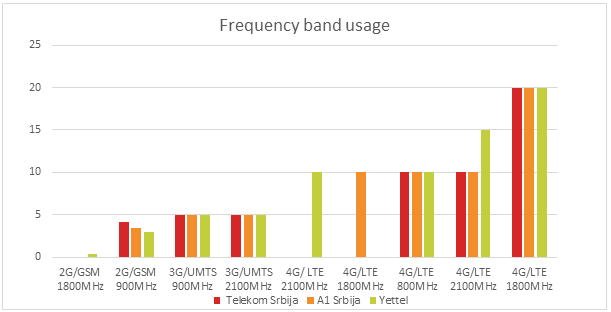
Fig. 1. Frequency bands used by operators
2G/GSM: All three operators used the 900 MHz band. The 1800 MHz band was used to a smaller extent by Yettel.
3G/UMTS: The 2100 MHz band utilized mainly by A1 Srbija and Telekom Srbija countrywide and in some minor spots by Yettel. Yettel with the main usage of U900 in the whole country where for this band Telekom Srbija and A1 Srbija have some single areas covered as well
4G/LTE: All three operators used the 800 MHz, 1800 MHz and 2100 MHz bands. Not only in the Cities but also on the Roads all three operators used LTE-3/4CA, with up to 4CA aggregated carriers by A1 Srbija (50MHz available bandwidth). Telekom Srbija and Yettel used LTE-3CA with 40 MHz and 45MHz available bandwidths respectively. Yettel this year utilized LTE 2100 MHz on one of two available bandwidths of channel 525: either 10MHz or 15MHz
Carrier Aggregation (CA) usage depends on the network configuration and the amount of data sent during the test. In Cties, A1 Srbija, Telekom Srbija and Yettel, reached over 97% usage of LTE CA. On Highways, the usage of LTE CA was highest for Telekom Srbija with almost 99%, A1 Srbija ranked second with almost 96% and Yettel was the last with 94%. On the Main Roads, the usage of LTE CA was highest for Telekom Srbija with 92%, A1 Srbija with 90%, and Yettel with almost 58%. On Rural Roads, the LTE CA utilization was the lowest out of Roads aggreagation, with 76% for A1 Srbija, 75% for Telekom Srbija and 48% for Yettel.
Charts with mobile coverage statistics show the distribution of radio signal levels for 2G/GSM, 3G/UMTS and 4G/LTE technologies according to criteria defined by RATEL for the purpose of the Benchmarking campaign, are presented below in Figure 2:
| 2G/GSM signal level | 3G/UMTS signal level | 4G/LTE signal level | |
| Poor | L<-95dBm | L<-105dBm | L<-110dBm |
| Fair | -95dBm ≤ L < - 85dBm | -105dBm ≤ L < -95dBm | -110dBm ≤ L < -100dBm |
| Good | -85dBm ≤ L < -65dBm | -95dBm ≤ L < -65dBm | -100dBm ≤ L < -80dBm |
| Excellent | L ≥ -65dBm | L ≥ -65dBm | L ≥ -80dBm |
Figure 2. Radio signal levels for 2G/GSM, 3G/UMTS and 4G/LTE technologies
2G/GSM network coverage is presented in Figure 3.
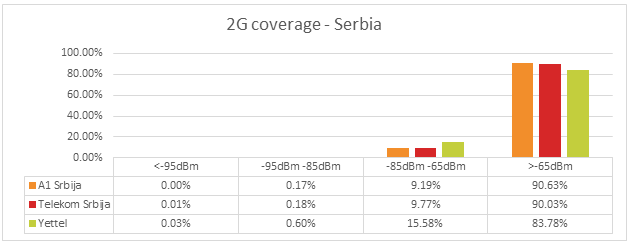
Fig. 3. 2G/GSM coverage
2G/GSM network coverage maps for all three mobile operators are shown in Figure 4.
A1 Srbija
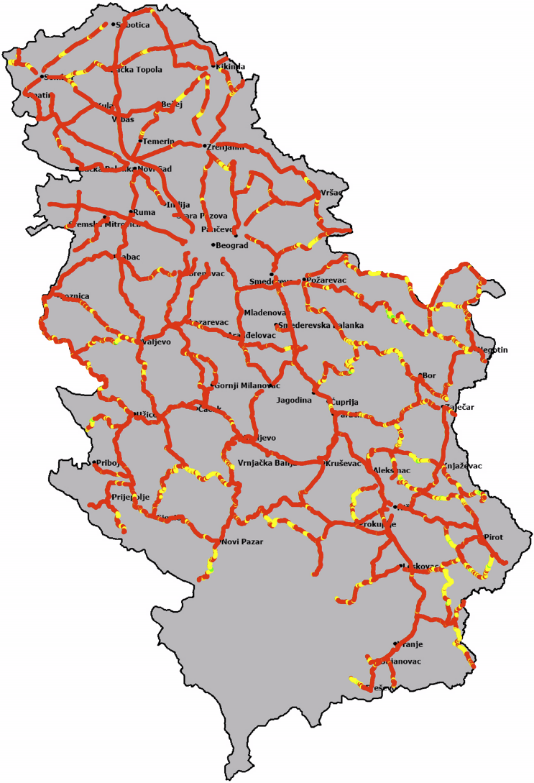
Telekom Srbija
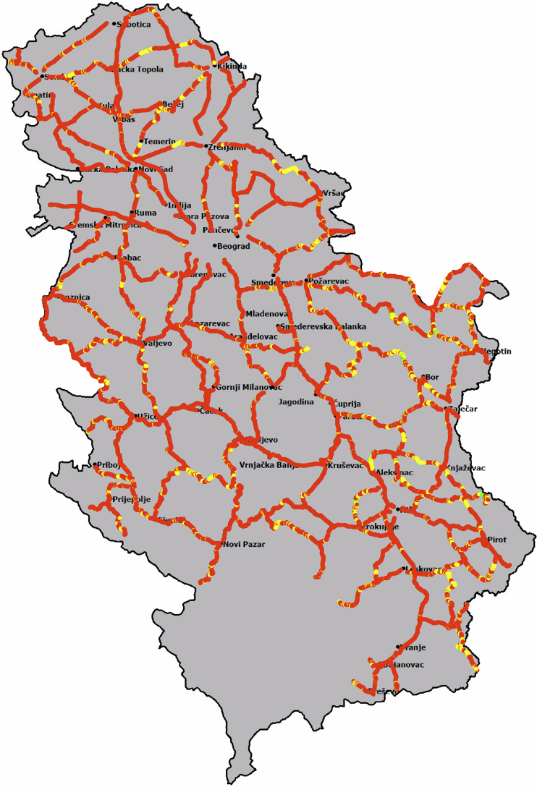
Yettel
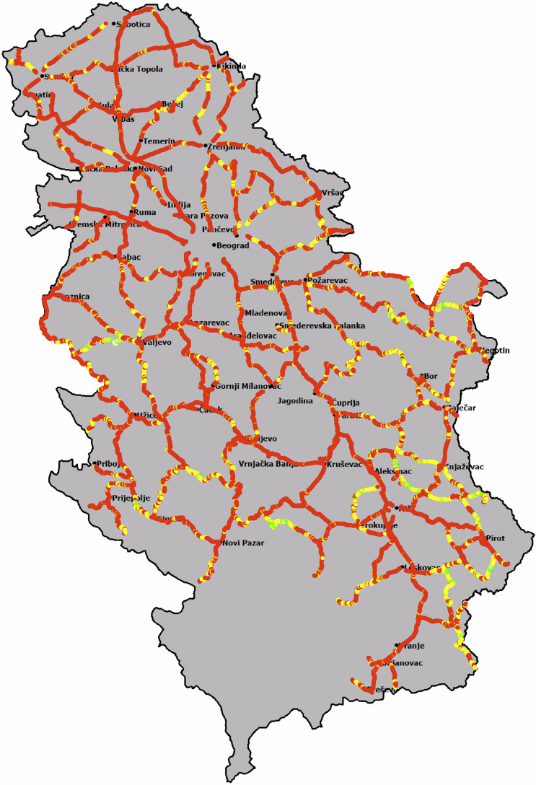
Fig. 4. 2G/GSM network coverage maps
The best coverage of 2G network was achieved by A1 Srbija and Telekom Srbija followed by Yettel which had poorer 2G coverage compared to the competitors.
3G/UMTS network coverage is presented in Figure 5.
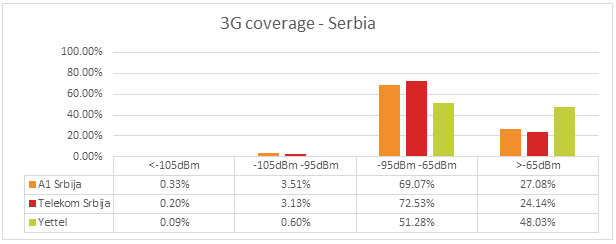
Fig. 5. 3G/UMTS coverage
3G/UMTS network coverage maps for all three mobile operators are shown in Figure 6.
A1 Srbija
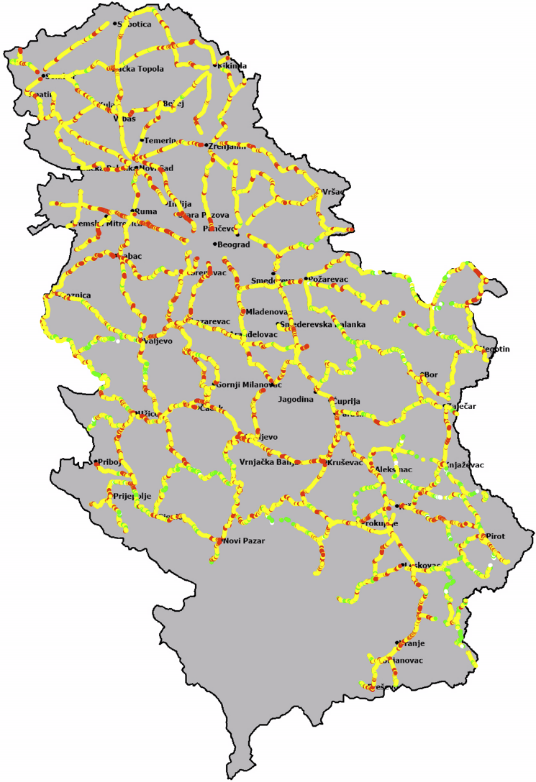
Telekom Srbija
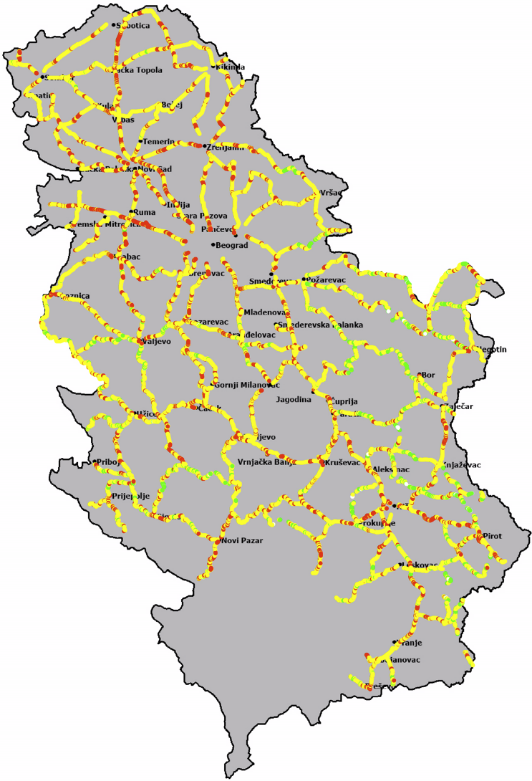
Yettel
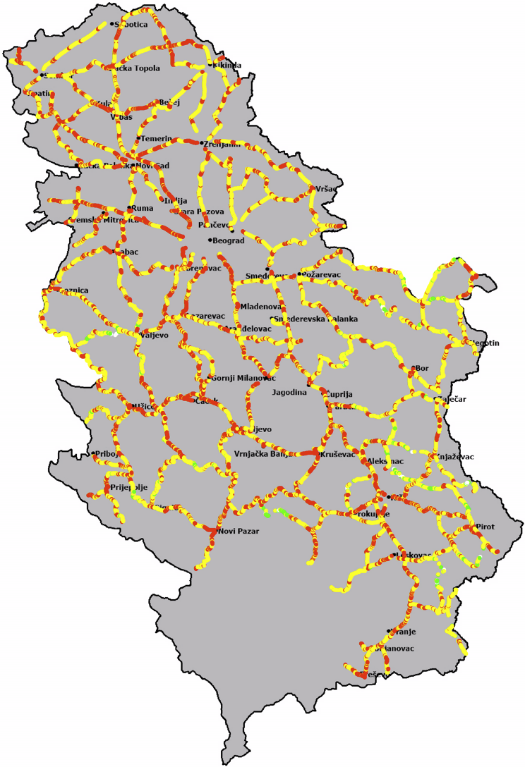
Fig.6. 3G/UMTS network coverage maps
The network with the best 3G coverage is Yettel . This result was achieved due to the widest UMTS 900 MHz footprint, with a well-developed UMTS 900 MHz coverage outside of cities. Telekom Srbija and A1 Srbija with worse 3G coverage on their mainly utilized UMTS 2100 MHz bands.
4G/LTE network coverage is presented in Figure 7.
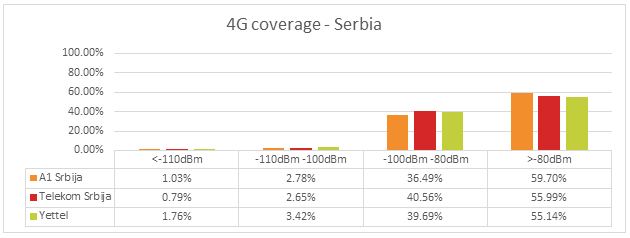
Fig. 7. 4G/LTE network coverage
4G/LTE network coverage maps for all three mobile operators are presented in Figure 8.
A1 Srbija
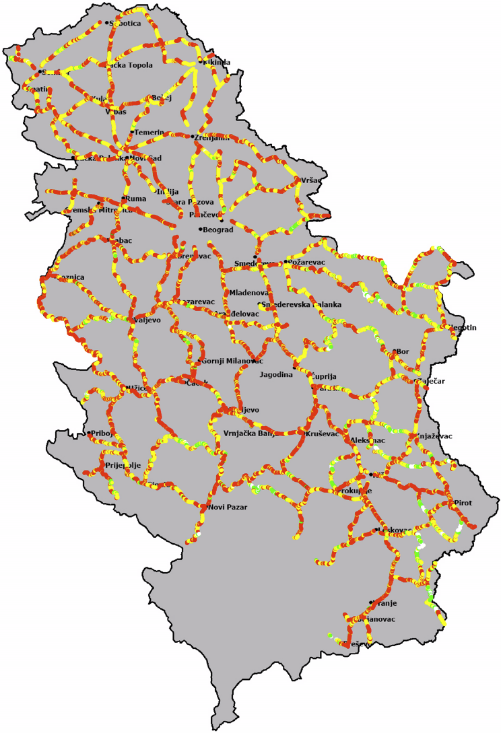
Telekom Srbija
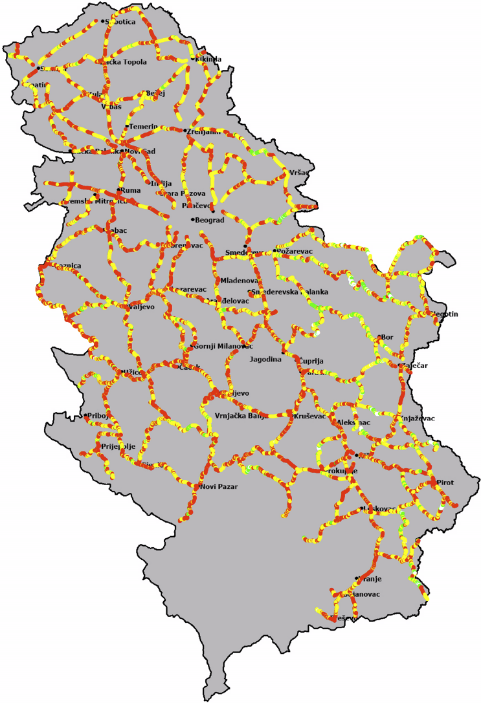
Yettel
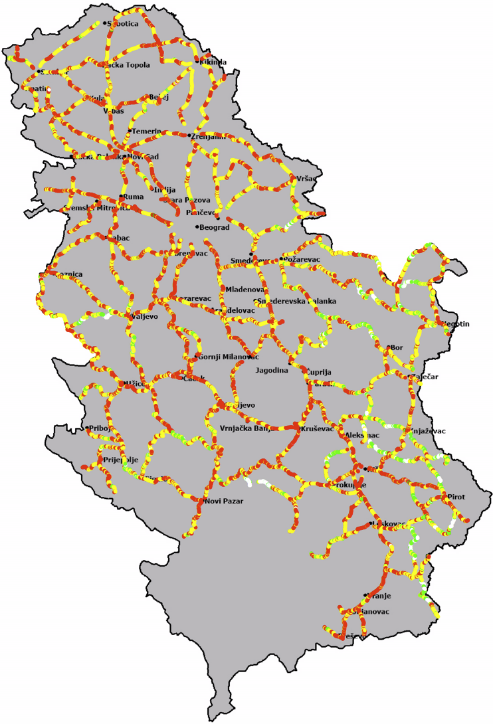
Fig. 8. 4G/LTE network coverage maps
The 4G coverage distribution showed that all operators are providing a very good level of coverage, with A1 Srbija sharing the highest number of samples in Excellent category (> -80 dBm), Telekom Srbija second and Yettel slightly behind. Telekom Srbija with the lowest share of samples in Poor coverage categories (<-110 dBm – 100 dBm) and (<-110 dBm) out of all three operators.